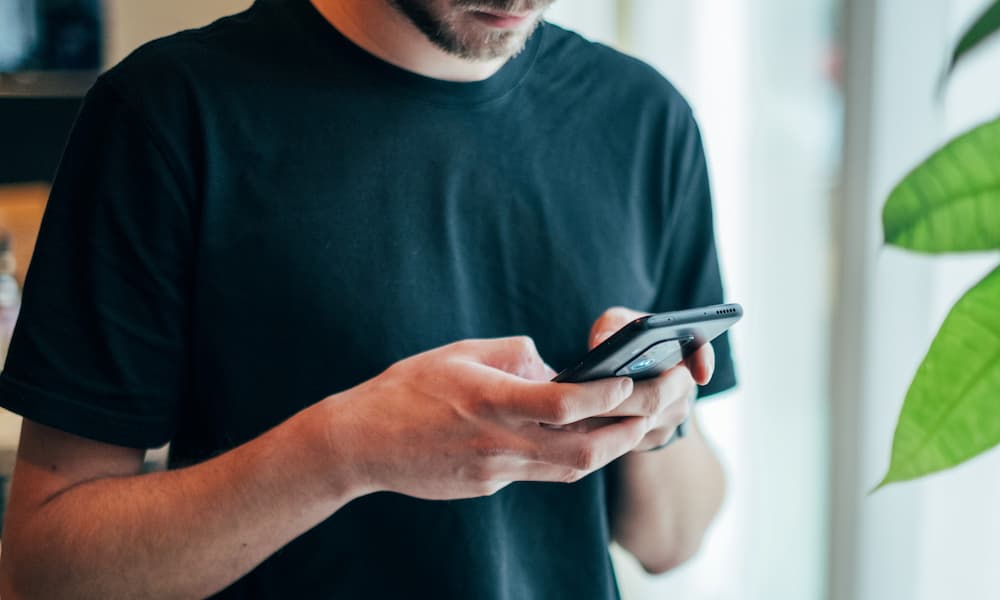Managing Stress During Cancer Treatment
April Hirschberg, MD and Rachel Millstein, PhD share practical ways to ease stress and improve your well-being.
Patient Education8 Minute ReadJul | 27 | 2022
“We need to collectively make it a common expectation that education and training in digital literacy are key to healthy living and achieving tech-life balance.”
-Carl Marci, MD
In this Q&A, Dr. Marci shares his current research and insights from his new book, Rewired on the impact of digital technology on the human brain, behavior and mental health and how people can live more balanced lives with the technology that’s become integral to our daily routines.
I describe myself as a physician, scientist and entrepreneur. I started out as an academic and spent 10 years studying the neurobiology of empathy and how talk therapy can have healing powers as powerful as medication. I have co-founded several companies and advise early-stage organizations at the intersection of health and technology.
Social neuroscience is the study of how humans relate to each other. My research about the neurobiology and physiology of empathy during psychotherapy was key to my thinking about how we can measure and quantify the deep, emotional connections we have with objects.
Working with large media companies and advertisers with the company I co-founded and launched out of the MIT Media Lab in 2006, I had a front row seat doing research on the impact of smartphones and social media advertising on the brains and behaviors of consumers. The more we learned, the more concerned I became about the impact of mobile media, information and communications technology on the developing brain and how its ubiquitous spread into nearly every aspect of our daily life can lead to mental health issues.
As I went deeper into the fields of social and consumer neuroscience over time, I ended up researching the impact of digital technology on human brain, behavior and mental health for my new book, Rewired: Protecting Your Brain in the Digital Age.
We have to be careful about how we use the word addiction. There’s a continuum between healthy habits and unhealthy addictions. Habits are routines that we develop to save time and preserve cognitive capacity for more complex tasks. I would argue nearly all of us have changed our habits and behaviors around smartphones and related technologies. And when you change your habits, you change your brain—it’s that simple.
Sometimes those changes are for the better and there are a lot of wonderful things about mobile technology. But we are all walking around with a supercomputer in our pocket with full access to the internet and a world of temptation and titillation. There is more research needed, but we now know that while we are all at some risk, there is a subset of people who have developed problematic and unhealthy habits due to the omnipresence of smartphones and their applications. There is growing understanding that there’s another subset of people who have a true addiction and need serious interventions. We need to be more nuanced in our assessments, we need better tools for screening, and more data to understand the differences.
Media consumption has more than doubled over the last 20 years. The previous average for adults was about eight hours a day and now we’re averaging closer to 12 hours and that comes at a cost—most typically that means less time in-person with other people.
I talk about the three Ds:
Not everyone is at the same risk—those at a higher risk may include people who have a history of mental health issues or have dealt with adverse life events or trauma are at higher risk; people who are in a negative mood and share it online and those who spend too much time using their devices and media as a mood regulator; and very clearly, people who multitask and use a lot of different social media platforms are at risk.
Young children and adolescents, with their developing brains, are especially vulnerable. Consider how physically dangerous operating a car can be and how many guardrails governments put in place over time to ensure teenagers are educated and prepared to handle the responsibility of driving a car. Given the risk to mental health, why would we give kids free reign of a supercomputer without similar parameters to help ensure they’re equipped with the knowledge, tools and healthy behaviors they need to navigate digital life?
Technology isn’t going anywhere, if anything it’s going to become more of a part of our daily life. We need to collectively develop a common expectation that digital literacy and training on how to stay healthy in the digital age are keys to healthy living.
There are habits we can implement to protect our brains and mental health in the digital age such as:
U.S. News & World Report rates Mass General Psychiatry the top in the nation.
Find information on psychiatry residencies, fellowships and other continuing medical education opportunities.
Advances in Motion highlights the latest breakthroughs, research and clinical trials in Psychiatry from Mass General
April Hirschberg, MD and Rachel Millstein, PhD share practical ways to ease stress and improve your well-being.
Dr. James McKowen joins Drs. Olivio and Seilder on their podcast “College is Fine, Everything’s fine” to discuss alcohol and substance use on campus.
Research has shown that integrating anything at this scale into human daily life could lead to overuse and addiction. So what does all this screentime mean for our long-term mental and physical health?
Could early-life childhood adversity such as trauma, socio-economic hardship, or parental illness have an impact mental health and resilience later in life?
In this large-scale comparative effectiveness trial, researchers demonstrated the equivalence of delivering early palliative care via video versus in-person visits on quality of life in patients with advanced lung cancer.
The Mass General Addiction Recovery Management Service (ARMS) addresses gaming, gambling and problematic digital technology use in young adults.
